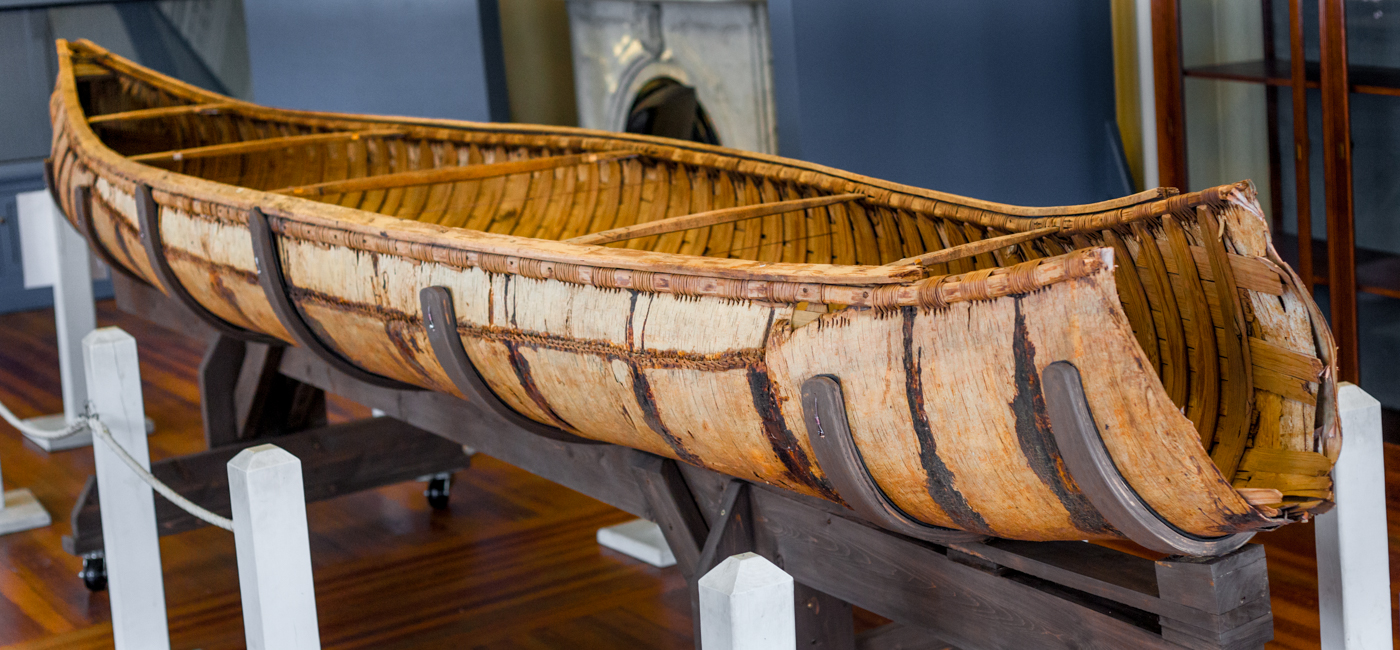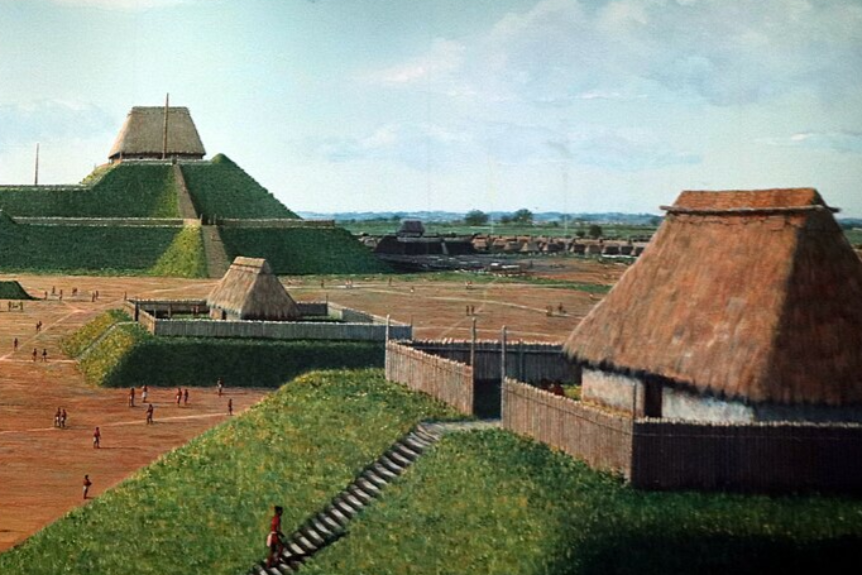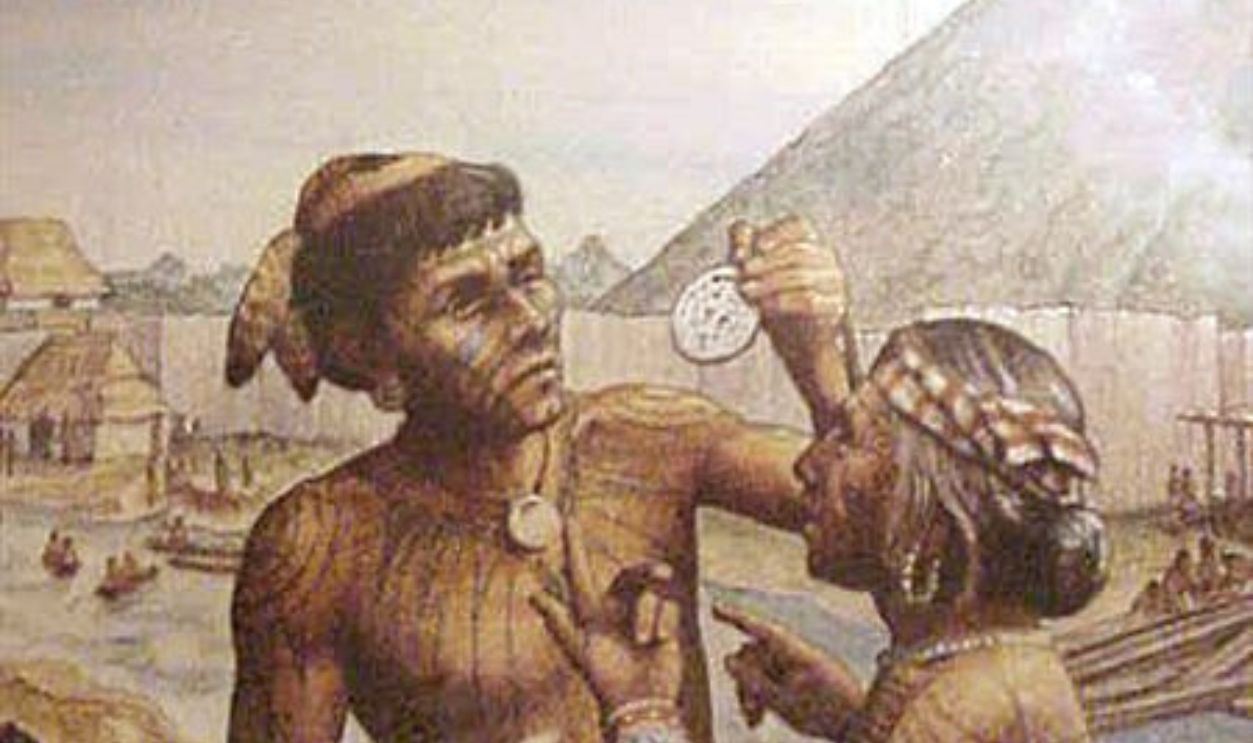Underneath It All
No bells rang when the land sank under the tides. Families simply packed, moved and left behind forgotten traces that now drift quietly along the lakebeds and coastlines.

Paleo-Indian Hunters (Lake Huron Submerged Drive Lanes)
Around 9,000 years ago, Paleo-Indians constructed stone drive lanes beneath what is now Lake Huron, designed to funnel migrating caribou into strategic hunting zones. These lanes, now drowned 120 feet underwater, reveal complex planning and cooperation among early North American hunters who adapted skillfully to a harsh, changing environment.
 Archeologists have discovered a mystery at the bottom of Lake Huron by Scientific American
Archeologists have discovered a mystery at the bottom of Lake Huron by Scientific American
Archaic People (Lake Huron, Alpena, Amberley Ridge)
Rush forward a few centuries, and the Alpena-Amberley Ridge unfolds like a silent, underwater highway of secrets. Early Archaic people roamed this drowned spine to utilize scattered hunting blinds to track their prey. Wonder how they survived? Collaboration and sharp eyes.
 NarparMI, CC BY-SA 3.0, Wikimedia Commons
NarparMI, CC BY-SA 3.0, Wikimedia Commons
Ancient Gulf Coast Inhabitants (Submerged Florida Sites)
Florida’s ancient coastlines weren’t always sun-drenched playgrounds; they held bustling camps with hunters and gatherers. Entire communities vanished underneath rising seas 7,000 years ago, leaving behind underwater relics. The Page-Ladson site, for example, had tools and mastodon bones dating back over 14,500 years.
Shell Mound Builders (Mobile Bay Submerged Middens)
Shells stacked like trophies told the story of the Shell Mound Builders, whose pride in their catch now rests below Mobile Bay’s murky tides. Middens—ancient garbage heaps—mark their celebration of abundance. Over time, the rising sea levels covered many of these middens and preserved them as underwater archaeological treasures.
 Mikelzubi, CC BY-SA 4.0, Wikimedia Commons
Mikelzubi, CC BY-SA 4.0, Wikimedia Commons
Windover People (Windover Pond, Florida Burial Site)
Around 6,000 BCE, the Windover People used a peat bog as a burial site, where the remains of 168 individuals were preserved. Among the findings were skeletons wrapped in woven cloth, and their brain tissue remained preserved in most skulls. The peat’s unique properties created a natural time capsule.
 ROY KLOTZ MD, CC BY-SA, Wikimedia Commons
ROY KLOTZ MD, CC BY-SA, Wikimedia Commons
Archaic Mound Builders (Watery Sites Of Louisiana)
In Louisiana’s misty swamps, ancient mound builders left behind grand earthworks. These early architects sculpted nature itself by piling mud and clay into ceremonial mounds. Sites like Poverty Point and Watson Brake are among the oldest mound complexes in North America.
 United States Army Corps of Engineers., Wikimedia Commons
United States Army Corps of Engineers., Wikimedia Commons
Cahokian Forebears (Early Mississippi River Valley Settlements)
Before Cahokia’s towering mounds kissed the sky, their ancestors wrestled with the Mississippi’s moody floods. These early settlers built homes, shrines, and farming villages along the fertile floodplains, now buried under shifting sediments. Nature always wins in the end, doesn’t it? Yet, their legacy stubbornly persists.
Submerged Villages (Chesapeake Bay Tangier Island Archaeology)
Tangier Island in Chesapeake Bay is a fascinating site where rising tides have concealed traces of ancient settlements. Archaeologists have uncovered artifacts along eroding shorelines to reveal glimpses of the lives of early inhabitants. The island itself has been steadily losing landmass due to sea level rise and erosion.
 U.S. Army Corps of Engineers Norfolk District from United States, Wikimedia Commons
U.S. Army Corps of Engineers Norfolk District from United States, Wikimedia Commons
Glacial Trail Tribes (Lake Michigan Underwater Rock Formations)
Beneath Lake Michigan’s gentle ripples lurk mysterious rock formations. Caribou-hunting tribes, crafty and bold, built them roughly 9,000 years ago during a time of extreme cold. The formations, often compared to underwater archaeological treasures, highlight the resourcefulness of these communities, where precision and teamwork prevailed.
Karankawa Coastal People (Drowned Texas Coastlines)
Along Texas’s sunbaked coast, the fierce Karankawa people thrived; tall, tattooed, and famously fearless. Rising seas finally forced their exodus, and they left behind pottery shards and ceremonial sites that are now hidden below Gulf waters. Their spirit lingers, daring you to remember a world washed away.
Ancient Great Lakes Fishers (Lake Erie Shallow Water Settlements)
Teeming with fish and opportunity, Lake Erie’s ancient shores once buzzed with expert fishers setting ingenious weirs and nets. Today, their shallow water settlements lie quietly under banks as they guard the secrets of a 4,000-year-old aquatic economy that once harvested the lake’s abundant resources.
 Andre Carrotflower, CC BY-SA 4.0, Wikimedia Commons
Andre Carrotflower, CC BY-SA 4.0, Wikimedia Commons
Early California Coastal Tribes (Channel Islands Sea Level Rise)
Beneath the shimmering waves around the Channel Islands, the earliest coastal Californians played a daring game with the ocean. These pioneers built fish traps and hunted sea otters long before rising waters swallowed their lands. It’s wild to think surfers ride over ancient camps that lie underwater.
 National Park Service Digital Image Archives, Wikimedia Commons
National Park Service Digital Image Archives, Wikimedia Commons
Jornada Mogollon Ancestors (New Mexico Submerged Springs)
Ancient life in New Mexico wasn’t just sand and sun—you’d find lush springs back then. The Jornada Mogollon people crafted settlements near gurgling oases, many of which now lie hidden under sediment and floodplains. Springs that once sang with life now murmur only through memory.
 Jeff Schmaltz, Wikimedia Commons
Jeff Schmaltz, Wikimedia Commons
Monongahela People (Ohio Valley River Shifts)
You might not expect it, but the rivers of the Ohio Valley have a wicked habit of betrayal. The Monongahela people learned this firsthand when their villages were destroyed by floods and river shifts, leaving ghost towns. This is one of the ways nature rearranges her furniture without warning.
 John Kane, CC0, Wikimedia Commons
John Kane, CC0, Wikimedia Commons
Coastal Algonquians (Delmarva Peninsula Retreat)
Along the Delmarva Peninsula, Algonquian-speaking tribes carved a watery life of fishing and trading. Then the sea crept closer, year by year, to the point of forcing a slow and heartbreaking retreat inland. Their legacy endures in the archaeological record and the cultural echoes of their resourceful way of life.
 National Archives at College Park, Wikimedia Commons
National Archives at College Park, Wikimedia Commons
Timucua Settlements (Northern Florida Submergence)
Dense forests and twisting rivers once hosted proud Timucua communities across northern Florida. But yet again, floodwaters didn’t ask permission; they simply took what they wanted, drowning hunting camps and trading paths alike. Today, only drowned artifacts whisper of a time when giants walked the wetlands.
Wabanaki Coastal Communities (Submerged Gulf Of Maine Sites)
Along the Gulf of Maine, Wabanaki coastal communities thrived for centuries, skillfully moving through the region’s rich marine resources. Today, parts of these ancient settlements slumber beneath muddy tides. Dive deep enough (figuratively and literally), and you uncover a world where stone hearths and birch canoes once ruled the day.
 Paul VanDerWerf, CC BY 2.0, Wikimedia Commons
Paul VanDerWerf, CC BY 2.0, Wikimedia Commons
Mississippian Floodplain Cities (Lower Mississippi River Basin)
Massive floods re-sculpted the lives of Mississippian floodplain cities, whose builders were mound-raisers and master hydrologists. Grand plazas, bustling markets, elaborate villages, and more vanished under river surges, a real-life disappearing act. Nature takes without asking; here is more evidence.
 Thank You (24 Millions ) views, CC BY 2.0, Wikimedia Commons
Thank You (24 Millions ) views, CC BY 2.0, Wikimedia Commons
Taino Coastal Settlements (Caribbean Islands Rising Seas)
Long before pirates prowled the Caribbean, the Taino built seaside towns rich in trade, song, and ceremony. As the waters rose, many of these vibrant hubs vanished into the surf. Their abandoned stone circles and sacred sites now rest underneath the waves, awaiting curious minds like yours.
 Michal Zalewski, CC BY-SA 2.5, Wikimedia Commons
Michal Zalewski, CC BY-SA 2.5, Wikimedia Commons
Arawak Coastal Traditions (Ancient Flooded Sites In The Bahamas)
Sail across the Bahamas today, and you float above ancient Arawak coastal villages. These communities once thrived along expanded shorelines before sea levels rose over 5,000 years ago, submerging homes and ceremonial sites now preserved beneath the region’s clear, shallow waters.
Hohokam Water Engineers (Arizona Ancient Irrigation Lost)
Between 300 and 1500 CE, the Hohokam people built over 500 miles of irrigation canals across Arizona’s desert to support large farming communities. Many of these early water systems were buried over time by flooding and sediment, and it left visible traces below the modern terrain.
Inuit Coastal Migration (Alaskan Submergence Events)
By around 1000 CE, Inuit communities had adapted to the dramatic coastal changes in Alaska caused by melting ice and rising sea levels. Entire settlements once built along now-submerged shorelines show how the Inuit shifted their hunting grounds and routes as the environment rapidly transformed.
 Universal History Archive, Getty Images
Universal History Archive, Getty Images
Yupik Fishing Villages (Flooded Bering Land Bridge Coasts)
Between 12,000 and 10,000 years ago, Yupik ancestors lived along the expansive Bering Land Bridge, fishing and hunting across a now-lost coastline. As sea levels rose after the previous Ice Age, many of their camps and pathways disappeared underneath the Bering and Chukchi Seas.
 National Park Service, Wikimedia Commons
National Park Service, Wikimedia Commons
Tlingit Ancestral Sites (Submerged Alaskan Fjords)
The Tlingit people established coastal villages along southeastern Alaska’s fjords around 1,000 years ago. Today, some of these ancestral sites lie underwater due to glacial melting and post-glacial sea-level rise. What remains are stone tools and structural remains under the cold waters of the region.
 William H. Partridge, Wikimedia Commons
William H. Partridge, Wikimedia Commons
Pacific Northwest Salish Villages (Eroded And Submerged Locations)
Centuries of coastal erosion and rising sea levels gradually drowned parts of the Pacific Northwest where Salish communities once thrived. Beginning around 3000 BCE, these coastal societies built fishing camps, trade hubs, and cedar-crafted homes. Today, you find it all hidden below the water.















